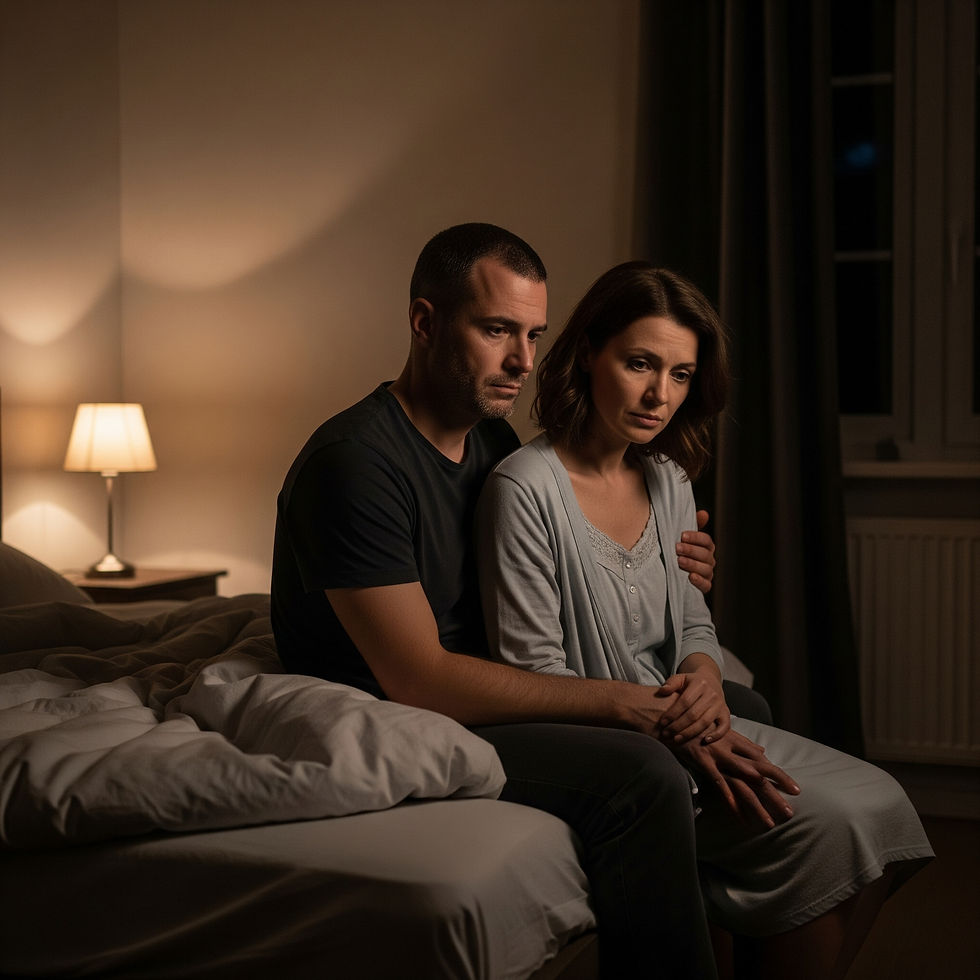How to Recognize Symptoms of Low Testosterone and Take Action
- Dr. Iman Bar, M.D.

- Sep 11
- 4 min read

This article takes a look at the potential signs of low testosterone, and discusses methods to address them. Imagine Waking Up Feeling Like a Deflated Superhero Picture this: You're in your prime, but suddenly, your get-up-and-go has got up and gone.
You're dragging through the day, your workouts feel pointless, and your love life? Let's just say it's on hiatus. Sound familiar?
The sneaky hormone thief affecting millions of men. But fear not! Understanding the symptoms, causes, and smart testing (hello, free and bioavailable testosterone) can put you back in the driver's seat. Let's dive in with some science and zero judgment – because even superheroes need a hormone check-up.
Symptoms of Low Testosterone
Red Flags You Can't Ignore Low testosterone, or hypogonadism, isn't just an "old guy" problem – it can hit young men too, thanks to stress, lifestyle, or underlying issues. Symptoms often creep up slowly, masquerading as "just life," but paying attention can lead to early fixes like lifestyle tweaks or therapies (think peptides over straight TRT for the young crowd). Here's what to watch for – if you're nodding along to several, it's time to chat with a doc:
Sexual and Reproductive Woes
Reduced sex drive (libido), erectile dysfunction (trouble getting or keeping it up), reduced semen volume, or even infertility. For young men, this might mean smaller testicles or delayed puberty vibes.
Physical Change
Fatigue that coffee can't fix, loss of muscle mass (gains vanishing despite effort), increased body fat (especially around the belly), hair loss (not just on your head), or brittle bones leading to fractures. Some men even notice breast enlargement or hot flashes. For gym-goers, low testosterone can lead to difficulty building muscle despite consistent workouts, reduced workout performance due to fatigue, prolonged recovery times after exercise, and overall slower muscle growth and repair.
Mental and Emotional Shifts
Irritability, mood swings, depression, brain fog, or trouble concentrating. Sleep issues like insomnia or sleep apnea can worsen the cycle. These symptoms overlap with other conditions (like thyroid issues or depression), so don't self-diagnose.
But if they're persistent, especially in clusters, get tested – early detection rocks.
Starting with the Tests
Why Total Testosterone Isn't Enough Diagnosis kicks off with blood tests.
The best time to test for testosterone is in the morning, ideally between 7:00 and 10:00 AM, when levels are at their peak due to the body's natural circadian rhythm.
For men aged 45 and older, testing can be done up to 2:00 PM, as the daily variation in levels tends to decrease with age.
Confirm low levels on at least two separate days to rule out flukes. Low total testosterone is typically under 300 ng/dL (10.4 nmol/L), but here's the twist:
Total T measures everything, including the bound-up stuff that's not doing much.
That's why we zoom in on free testosterone (unbound, ready-to-rock) and bioavailable testosterone (free plus loosely bound to albumin) – they're the real MVPs for symptoms and treatment decisions.
Why Free and Bioavailable Matter
Total T can be misleading if sex hormone-binding globulin (SHBG) is off-kilter.
High SHBG (from aging, liver issues, or meds) traps testosterone, leaving low free/bioavailable levels despite "normal" total.
Low SHBG (obesity, diabetes) does the opposite.
Free/bioavailable correlate better with symptoms like low energy or libido.
Normal free T: ~50-210 pg/mL; bioavailable: ~110-575 ng/dL.
Core Lab Tests
The following are labs you may want to consider.
Total Testosterone: The starting point.
Free Testosterone: Direct measure (equilibrium dialysis best) or calculated.
Bioavailable Testosterone: Captures the active pool.
SHBG: To interpret totals.
LH and FSH: High? Primary (testicular) issue. Low/normal? Secondary (brain/pituitary).
Prolactin (rule out tumors), thyroid tests, semen analysis if fertility's key.
Test when symptoms suggest it, especially if total T is borderline or SHBG-altering factors are present.
Digging Deeper
Causes and In-Depth Details Low T stems from primary (testes fail) or secondary (hypothalamus/pituitary glitch) issues.
Causes include:
Primary: Genetic (Klinefelter's), injury, chemo, or infections.
Secondary: Tumors, trauma, obesity, stress, opioids, or even sleep apnea.
Age/Lifestyle: Drops 1% yearly post-30; amp it with poor diet or no exercise.
For young men, avoid TRT pitfalls
Taking external testosterone at a high doses will suppress the "hypothalamus" in the brain and shut down your own production of testosterone, and sperm - and can be perminant!

Details: Free T testing shines in obesity (low SHBG) or aging (high SHBG). Bioavailable adds albumin-bound insight. See an endocrinologist – they might add MRI or genetics.
Wrapping Up: Take Charge of Your Hormones Low T isn't a life sentence. Spot symptoms, test wisely (free/bioavailable for the win), and explore options.
For young guys, peptides like kisspeptin or gonadorelin might preserve your natural flow. Stay proactive – your future self (and partner) will thank you.
Reasons When Not to Test for Testosterone
Testing during certain conditions can lead to falsely low results, so avoid it in these scenarios.
During Acute Illness: Infections or sickness can temporarily lower testosterone levels.
After Recent Surgery: Post-operative stress, inflammation, or recovery can suppress hormone levels.
High Stress Periods: Emotional or physical stress can cause transient drops.
Poor Sleep or Fatigue: Lack of quality sleep the night before affects results.
After Heavy Exercise: Intense workouts can temporarily lower levels; wait 24-48 hours.
Recent Alcohol Consumption: Alcohol can interfere; abstain the day before.
During Medication Changes: Certain drugs (e.g., opioids) may alter levels; stabilize first.
Testosterone Trivia Did you know?
Testosterone levels are typically highest in men between the ages of 17 and 19, after which they gradually decline at about 1% per year.
References
Cleveland Clinic. (n.d.). Low Testosterone (Male Hypogonadism). https://my.clevelandclinic.org/health/diseases/15603-low-testosterone-male-hypogonadism
Mayo Clinic. (n.d.). Male hypogonadism - Symptoms & causes. https://www.mayoclinic.org/diseases-conditions/male-hypogonadism/symptoms-causes/syc-20354881
Urology Care Foundation. (n.d.). Low Testosterone: Symptoms, Diagnosis & Treatment. https://www.urologyhealth.org/urology-a-z/l/low-testosterone
Medical News Today. (n.d.). Low testosterone: Symptoms, causes, and treatment. https://www.medicalnewstoday.com/articles/322647
Healthline. (2024). Low Testosterone: Causes, Symptoms, and Treatment. https://www.healthline.com/health/low-testosterone-causes




Comments